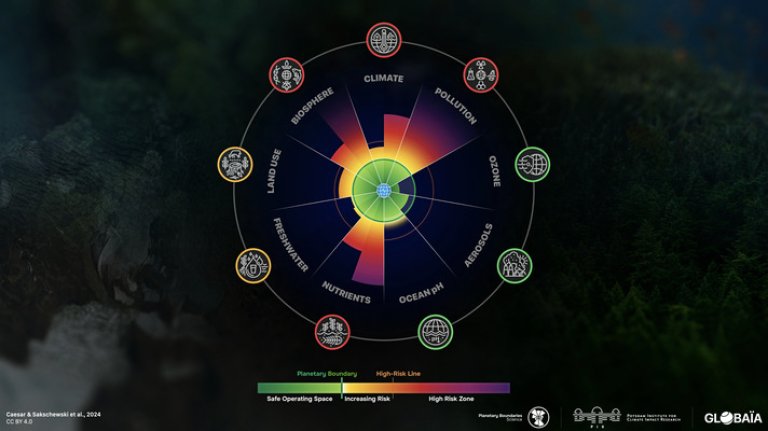Tangible indications of an increasingly unstable physical environment are steadily trending in headlines, newscasts, podcasts, and social media. They come in a variety of forms. One week it’s about massive wildfires; the next, abnormal midwinter temperature swings; flash floods; droughts; missing bees; record-breaking sea surface temperatures.
Beyond the superficial, much of the science on climate and nature suggests that warning signs are flashing on these systemic and intertwined problems. Towards the end of the year, the Potsdam Institute for Climate Impact Research, launched an overview of planetary life support systems, the Planetary Health Check (PHC). The report indicates that planet earth’s critical systems are severely at risk, with six of nine Planetary Boundaries breached.

What’s most relevant from the financial sector perspective is that these risks to the planet’s health constitute a systemic risk to human life, and to our ability to sustain the economic activities that investments are based on. For these risks to be successfully addressed, the finance sector has a critical role to play, especially in ensuring that capital is directed away from activities that have the most negative impacts on nature and climate.
As an investor, we address these interlinked issues around nature and climate holistically. Our approach to integrating these considerations into our investment processes and risk management, is reflected in our first joint climate and nature report, which you can read more about in this section.
We recently announced our updated climate policy and targets, detailing: new, more ambitious short-and long-term targets; how we are addressing climate risks and opportunities; and our detailed short-term action plan.
In order to achieve these targets, engagement with companies is one of the most important mechanisms we can use to actively contribute to a net-zero transformation.
An update in this section, “Racing to net zero” reviews our ongoing engagement with the top emitters and climate laggards in our portfolios. Among the top emitters, we see many companies taking significant steps: they have established climate targets supervised at board level, are disclosing their progress in line with TCFD guidelines for reporting. However, their short-term commitments are not aligned with their claimed long-term targets; they lack credible decarbonization strategies and their capital expenditure plans remain unaligned with their stated decarbonization plans.
Through the NA100 initiative, we are collaborating with a critical mass of other investors to engage companies on nature impacts. Our update on the work indicates that the companies engaged, are still only in the awareness stage, but haven’t progressed towards taking credible steps on their nature impacts and dependencies.
In addition to company engagement, policy is a vital tool for addressing systemic climate and nature risk, and pushing economic activity on to pathways that are aligned with globally agreed targets for limiting climate change and halting and reversing biodiversity loss. In this section, Storebrand Asset Management CEO Jan Erik Saugestad offers a perspective on what’s needed from governments on a major aspect of these systemic risks: to nature and biodiversity loss. We also recap the recent COP16 biodiversity talks and preview the upcoming resumptions of the national level negotiations on securing public and private investment to maintain and restore biodiversity.
Related content:







